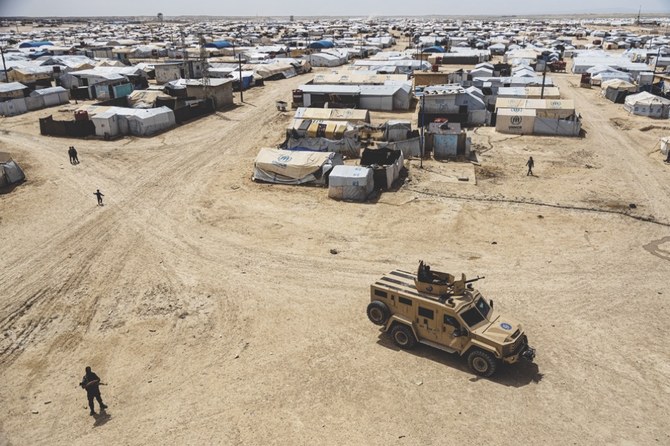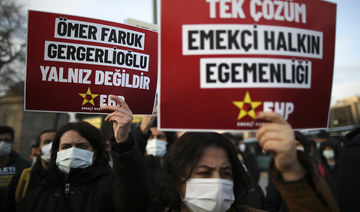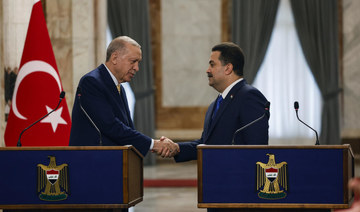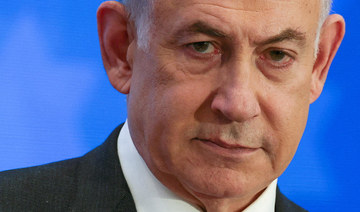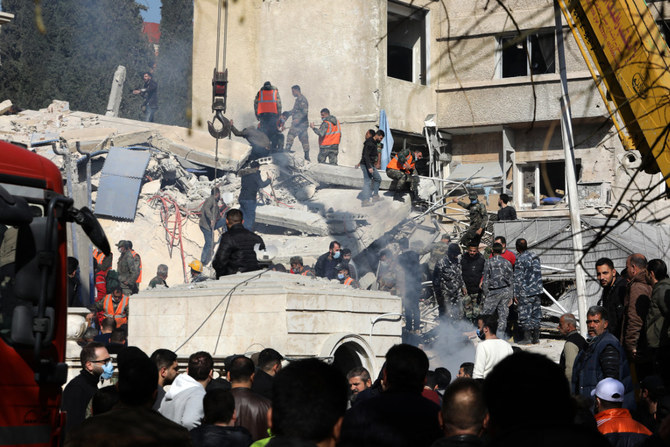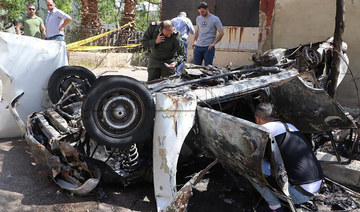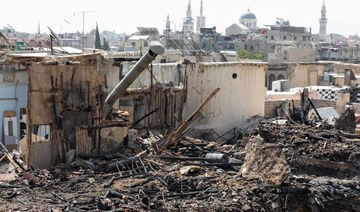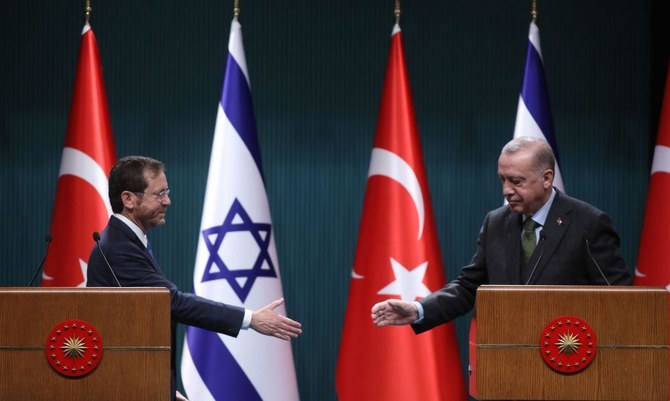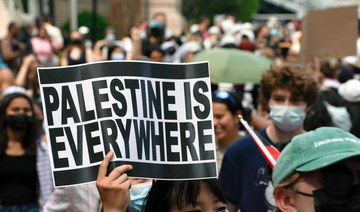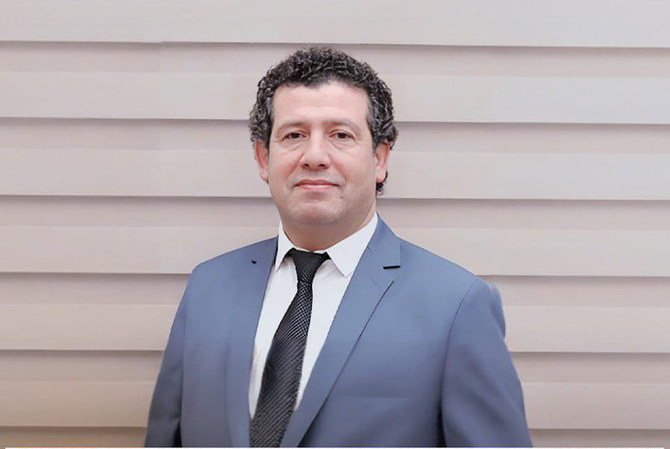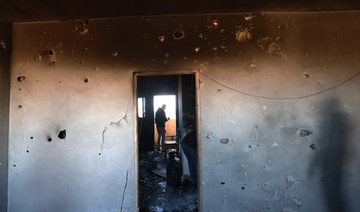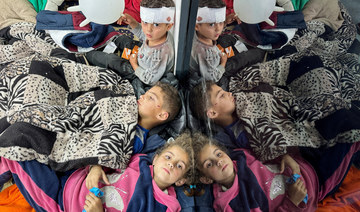RAS AL-ARA/YEMEN: Zahra struggled in the blue waters of the Gulf of Aden, grasping for the hands of fellow migrants. Hundreds of men, women and teenagers clambered out of a boat and through the surf, emerging, exhausted, on the shores of Yemen.
The 20-year-old Ethiopian saw men armed with automatic rifles waiting for them on the beach and she clenched in terror. She had heard migrants’ stories of brutal traffickers, lurking like monsters in a nightmare. They are known by the Arabic nickname Abdul-Qawi.
“What will they do to us?” Zahra thought.
She and 300 other Africans had just endured six hours crammed in a wooden smuggling boat to cross the narrow strait between the Red Sea and the Gulf. When they landed, the traffickers loaded them into trucks and drove them to ramshackle compounds in the desert outside the coastal village of Ras Al-Ara.
There was Zahra’s answer. She was imprisoned for a month in a tin-roofed hut, broiling and hungry, ordered to call home each day to beseech her family to wire $2,000. She said she did not have family to ask for money and pleaded for her freedom.
Instead, her captors raped her. And they raped the 20 other women with her — for weeks, different men all the time.
“They used each of the girls,” she told The Associated Press. “Every night there was rape.”
With its systematic torture, Ras Al-Ara is a particular hell on the arduous, 1,400 km journey from the Horn of Africa to Middle Eastern countries. Migrants leave home on sandaled feet with dreams of escaping poverty. They trek through mountains and deserts, sandstorms and 113-degree temperatures, surviving on crumbs
of bread and salty water from ancient wells.
In Djibouti, long lines of migrants descend single file down mountain slopes to the rocky coastal plain, where many lay eyes on the sea for first time and eventually board the boats. Some remain stranded in Yemen’s nightmare — in some measure because Europe has been shutting its doors, outsourcing migrants to other countries.
The EU began paying Libyan coast guards and militias to stop migrants there, blocking the other main route out of East Africa, through Libya and across the Mediterranean to Europe.
The number of Mediterranean crossings plummeted — from 370,000 in 2016 to just over 56,000 so far this year.
Meanwhile, more than 150,000 migrants landed in Yemen in 2018, a 50 percent increase from the year before, according to the International Organization for Migration.
This year, more than 107,000 had arrived by the end of September, along with perhaps tens of thousands more the organization was unable to track — or who were buried in graves along the trail.
And European policies may be making the Yemen route more dangerous. Funded by the EU, Ethiopia has cracked down on migrant smugglers and intensified border controls. Arrests of known brokers have prompted migrants to turn to unreliable traffickers, taking more dangerous paths and increasing the risk of abuses.
Many of those migrants end up in Ras Al-Ara.
Nearly every migrant who lands here is imprisoned in hidden compounds while their families are shaken down for money. Like Zahra, they are subjected to daily torments ranging from beatings and rapes to starvation, their screams drowned out by the noise of generators or cars or simply lost in the desert.
“Out of every thousand, 800 disappear in the lockups,” said a humanitarian worker monitoring the flow of migrants.
Traffickers who torture are a mix of Yemenis and Ethiopians of different ethnic groups. So victims cannot appeal to tribal loyalties, they are tortured by men from other groups: If the migrants are Oromia, the torturers are Tigrinya.
At the same time, because the three main ethnic groups don’t speak each others’ languages, Yemeni smugglers need translators to convey orders to the migrants and monitor their phone conversations with their families.
The AP spoke to more than two dozen Ethiopians who survived torture at Ras Al-Ara. Nearly all of them reported witnessing deaths, and one man died of starvation hours after the AP saw him.
The imprisonment and torture are largely ignored by Yemeni authorities. The AP saw trucks full of migrants passing unhindered through military checkpoints as they went from the beaches to drop their human cargo at each desert compound, known in Arabic as a “hosh.”
“The traffickers move freely, in public, giving bribes at the checkpoints,” said Mohammed Said, a former coast guard officer who now runs a gas station in the center of town.
From Ras Al-Ara, it’s nearly 50 miles in any direction to the next town. Around 8,000 families live in a collection of decaying, one-story stone houses beside dirt roads, a lone hotel and two eateries. The fish market is the center of activity when the daily catch is brought in.
Nearly the entire population profits from the human trade. Some rent land to traffickers for the holding cells, or work as guards, drivers or translators. For others, traffickers flush with cash are a lucrative market for their food, fuel or the mildly stimulant leaves of qat, which Yemenis and Ethiopians chew daily.
Locals can rattle off the traffickers’ names. One of them, a Yemeni named Mohammed Al-Usili, runs more than 20 hosh. He’s famous for the red Nissan SUV he drives through town.
Others belong to Sabaha, one of the biggest tribes in southern Yemen, some of whom are famous for their involvement in illicit businesses. Yemenis call the Sabaha “bandits” who have no political loyalties to any of the warring parties..
Many traffickers speak openly of their activities, but deny they torture, blaming others.
Yemeni smuggler Ali Hawash was a farmer who went into the human smuggling business a year ago. He disparaged smugglers who prey on poor migrants, torturing them and holding them hostage until relatives pay ransom.
The flow of migrants to the beach is unending. On a single day, July 24, the AP witnessed seven boats pull into Ras Al-Ara, one after the other, starting at 3 a.m., each carrying more than 100 people.
The migrants climbed out of the boats into the turquoise water. One young man collapsed on the beach, his feet swollen. A woman stepped on something sharp in the water and fell screeching in pain. Others washed their clothes in the waves to get out the vomit, urine and feces from the rugged journey.
The migrants were lined up and loaded onto trucks. They gripped the iron bars in the truck bed as they were driven along the highway. At each compound, the truck unloaded a group of migrants, like a school bus dropping off students. The migrants disappeared inside..
From time to time, Ethiopians escape their imprisonment or are released and stagger out of the desert into town. Eman Idrees, 27, and her husband were held for eight months by an Ethiopian smuggler. She recalled the savage beatings they endured, which left a scar on her shoulder.
Said, the gas station owner, is horrified by the evidence of torture he has seen, so he has made his station and a nearby mosque into a refuge for migrants. But locals say Said, too, profits from the trafficking, selling fuel for the smugglers’ boats and trucks. But that means the traffickers need him and leave him alone.
On a day when the AP team was visiting, several young men just out of a compound arrived at the gas station. They showed deep gashes in their arms from ropes that had bound them. One who had bruises from being lashed with a cable said the women imprisoned with him were all raped and that three men had died.
Another, Ibrahim Hassan, trembled as he showed how he was tied up in a ball, arms behind his back, knees bound against his chest. The 24-year-old said he was bound like that for 11 days and frequently beaten. His torturer, he said, was a fellow Ethiopian but from a rival ethnic group, Tigray, while he is Oromo.
Hassan said he was freed after his father went door to door in their hometown to borrow money and gather the $2,600 that the smugglers demanded.
“My family is extremely poor,” Hassan said, breaking down in tears. “My father is a farmer and I have five siblings.”
Starvation is another punishment used by the traffickers to wear down their victims.
At Ras Al-Ara hospital, four men who looked like living skeletons sat on the floor, picking rice from a bowl with their thin fingers. Their bones protruded from their backs, their rib cages stood out sharply. With no fat on their bodies, they sat on rolled-up cloth because it was too painful to sit directly on bone. They had been imprisoned by traffickers for months, fed once a day with scraps of bread and a sip of water, they said.
One of them, 23-year-old Abdu Yassin, said he had agreed with smugglers in Ethiopia to pay around $600 for the trip through Yemen to the Saudi border. But when he landed at Ras Al-Ara, he was brought to a compound with 71 others, and the traffickers demanded $1,600.
HIGHLIGHT
The EU began paying Libyan coast guards and militias to stop migrants there, blocking the other main route out of East Africa, through Libya and across the Mediterranean to Europe.
He cried as he described how he was held for five months and beaten constantly in different positions. He showed the marks from lashings on his back, the scars on his legs where they pressed hot steel into his skin. His finger was crooked after they smashed it with a rock, he said. One day, they tied his legs and dangled him upside down, “like a slaughtered sheep.” But the worst was starvation.
“From hunger, my knees can’t carry my body,” he said. “I haven’t changed my clothes for six months. I haven’t washed. I have nothing.”
Near the four men, another emaciated man lay on a gurney, his stomach concave, his eyes open but unseeing. Nurses gave him fluids but he died several hours later.
The torment that leaves the young men and women physically and mentally shattered also leaves them stranded.
Zahra said she traveled to Yemen “because I wanted to change my life.”
She came from a broken home. She was a child when her parents divorced. Her mother disappeared, and her father — an engineer — remarried and wanted little to do with Zahra or her sisters. Zahra dropped out of school after the third grade. She worked for years in Djibouti as a servant, sending most of her earnings to her youngest sister back in Ethiopia.
Unable to save any money, she decided to try her luck elsewhere.
She spoke in a quiet voice as she described the torments she suffered at the compound. “I couldn’t sleep at all throughout these days,” as she suffered from headaches, she said.
She and the other women were locked in three rooms of the hut, sleeping on the dirt floor, suffocating in the summer heat. They were constantly famished. Zahra suffered from rashes, diarrhea and vomiting.
One group tried to flee when they were allowed to wash at a well outside. The traffickers used dogs to hunt them down, brought them back and beat them.
“You can’t imagine,” Zahra said. “We could hear the screams.” After that, they could only wash at gunpoint.
Finally, early one morning, their captors opened the gates and told Zahra and some of the other women to leave. Apparently, the traffickers gave up on getting money out of them and wanted to make room for others.
Now Zahra lives in Basateen, a slum on the outskirts of southern Yemen’s main city, Aden, where she shares a room with three other women who also were tortured.
Among them is a 17-year-old who fidgets with her hands and avoiding eye contact. She said she had been raped more times than she can count.
The first time was during the boat crossing from Djibouti, where she was packed in with more than 150 other migrants. Fearing the smugglers, no one dared raise a word of protest as the captain and his crew raped her and the other nine women on board during the eight-hour journey.
“I am speechless about what happened in the boat,” the 17-year-old said.
Upon landing, she and the others were taken to a compound, where again she was raped — every day for the next two weeks.
“We lived 15 days in pain,” she said.
Zahra said she’s worried she could be pregnant, and the 17-year old said she has pains in her abdomen and back she believes were caused by the rapes — but neither has money to go to a doctor. Nor do they have money to continue their travels.
“I have nothing but the clothes on me,” the 17-year old said. She lost everything, including her only photos of her family. Now, she is too afraid to even leave her room in Basateen.
“If we get out of here,” she said, “we don’t know what would happen to us.”
Basateen is filled with migrants living in squalid shacks. Some work, trying to earn enough to continue their journey. Others, like Abdul-Rahman Taha, languish without hope.
The son of a dirt-poor farmer, Taha had heard stories of Ethiopians returning from Saudi Arabia with enough money to buy a car or build a house. So he sneaked away from home and began walking. When he reached Djibouti, he called home asking for $400 for smugglers to arrange his trip across Yemen. His father was angry but sold a bull and some goats and sent the money.
When Taha landed at Ras Al-Ara, traffickers took him and 50 other migrants to a holding cell, lined them up and demanded phone numbers. Taha couldn’t ask his father for more money so he told them he didn’t have a number. Over the next days and weeks, he was beaten and left without food and water.
One night, he gave them a wrong number. The traffickers flew into a rage. One, a beefy, bearded Yemeni, beat Taha’s right leg to a bloody pulp with a steel rod. Taha passed out.
When he opened his eyes, he saw the sky. He was outdoors, lying on the ground. The traffickers had dumped him and three other migrants in the desert. Taha tried to jostle the others, but they didn’t move — they were dead.
A passing driver took him to a hospital. There, his leg was amputated. Now 17, Taha is stranded. His father died in a car crash a few months ago, leaving Taha’s sister and four younger brothers to fend for themselves back home. Taha choked back tears. In one of their phone calls, he remembered, his father had asked him: “Why did you leave?”
“Without work or money,” Taha told him, “life is unbearable.” And so it is still.






